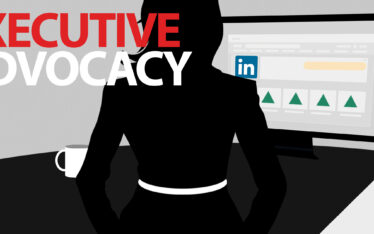
Finishing up a client’s recent sweepstakes last week reminded me of many previous games I’ve created and managed throughout my years in the industry. I once managed a sweepstakes for Cartoon Network in conjunction with the MLB, where one winner would get to bring their favorite player to school. The winner turned out to be a second grader from New Jersey. The player he chose to bring to school was a rookie with the Yankees: 2ndBaseman Rob Cano. That’s how long I’ve been creating and managing sweepstakes.
Back in those days, players would have to mail in their entry form. We’d run essay contests, and when the entries started pouring in, we’d hold reading parties, sitting around a huge conference table reading through written entries, Kleenex at the ready for the most emotional of them. I’ve even manned the phones for call-in sweepstakes. Those were the days before everything was online.
Back then, the agencies hired to create and manage these promotions would ensure that all the rules of promotion law were followed, keeping their clients from facing a potential lawsuit. The proliferation of the internet and social media has made it easy for SMBs and even individuals to run these types of promotions. The problem is that because it’s seemingly simple, the brands handle it themselves, without a full understanding of the rules. Social media has made the promotions incredibly cost effective, easy to share and a great way to build positive brand sentiment among a target audience. That said, rules are still rules. So before you kick off your next sweepstakes or contest, heed these six rules:
Rule #1: You must have rules
Just because it’s easy, doesn’t mean you don’t have to follow the rules of promotion law.
And the first rule of promotion law is that every contest or sweepstakes must have Official Rules posted somewhere that is easily accessible to the public.
Rule #2: Call it what it is
Regardless of the type of game promotion you run, you cannot require a purchase, unless you are a legal state lottery. Which I’m betting you’re not (see what I did there?). A sweepstakes can also be called a giveaway or a drawing. In this case, entrants are invited to provide specific information in exchange for a chance to win a prize. That info could be an email address, a name and phone number, or other identifying information. The purpose of a sweepstakes is to build a database of potential customers. A winner or winners will be selected randomly, not based on skill but rather on sheer luck of the draw, as it were.
Contests are games of skill, and just like a sweepstakes, a purchase cannot be required to enter. Rather than filling out an entry form for a random shot at winning, a contest requires players to compete against each other for a prize, with the winner chosen by a judge or panel of judges who use a pre-established set of criteria. So for example, a home improvement company holds a photo contest asking consumers to send in a picture of their outdated master bathroom. The worst looking picture will win a free bathroom makeover. The criteria for choosing a winner might include: outdated colors or style, unorganized space, lack of storage, greatest potential for improvement, etc.
Calling it what it is will help you determine how to set it up, what legal requirements you’ll need to consider, how to write the rules, and how the winner(s) will be chosen.
Rule #3: Take advantage of your audience’s captivity
You’ve gotten them to click through to the entry page, where they’ll take the time to fill out a short entry form. While you have them there, why not ask a question or two that might offer you some invaluable insight to your target audience? A real estate company might ask “How soon do you plan on buying or selling a home?” A home improvement company might ask “Which room in your home is most in need of a makeover?” Finding out more about your audience is a great way to target them with information they need and want, and qualify potential sales leads.
Rule #4: Plan for the what-ifs
Let’s say, for example, that your algorithm has chosen a random winner. You’ve tried three times to call this person, sent emails and even left two voice mail messages. And, nothing. After four days of waiting, you have the computer pick another winner, and give the new winner a call. He answers on the first ring and is thrilled with the news. A few hours later, the original winner calls back, having just returned from vacation. Now what?
Your rules should clearly state how a potential winner will be contacted and how long a potential winner has to accept the prize. For example: “Potential winner will be notified via phone and email. Three attempts will be made to reach out. If, after 5 business days, the winner cannot be reached, an alternate winner will be chosen.”
Rule #5: Get permission
So you’ve got your winner, and she’s thrilled. Remember that if you want to announce the winner on your social media platforms, you should only use the person’s first name and last initial. You should not share a full name, or any other personal information. And don’t use a photo of the winner without their express written consent.
Rule #6: Don’t miss the PR opportunity
Prize awarding should be an event unto itself. Don’t just send a check in the mail, show up with a video camera and capture the winner’s expression. Share photos on social platforms. Not only does it increase your brand awareness but it lets your audience know that yes, someone really does win these things, which means next time you run a promotion there will be fewer skeptics and more entrants.Recently, we held a sweepstakes for a home improvement company that drew positive attention via social media. In fact, our client effectively tripled their Facebook engagement from 7% to more than 21% during the promotion period.
Interested in learning how your brand can run a sweepstakes or contest with integrity that drives engagement, grows your lead database and gets results? Let’s get started!


